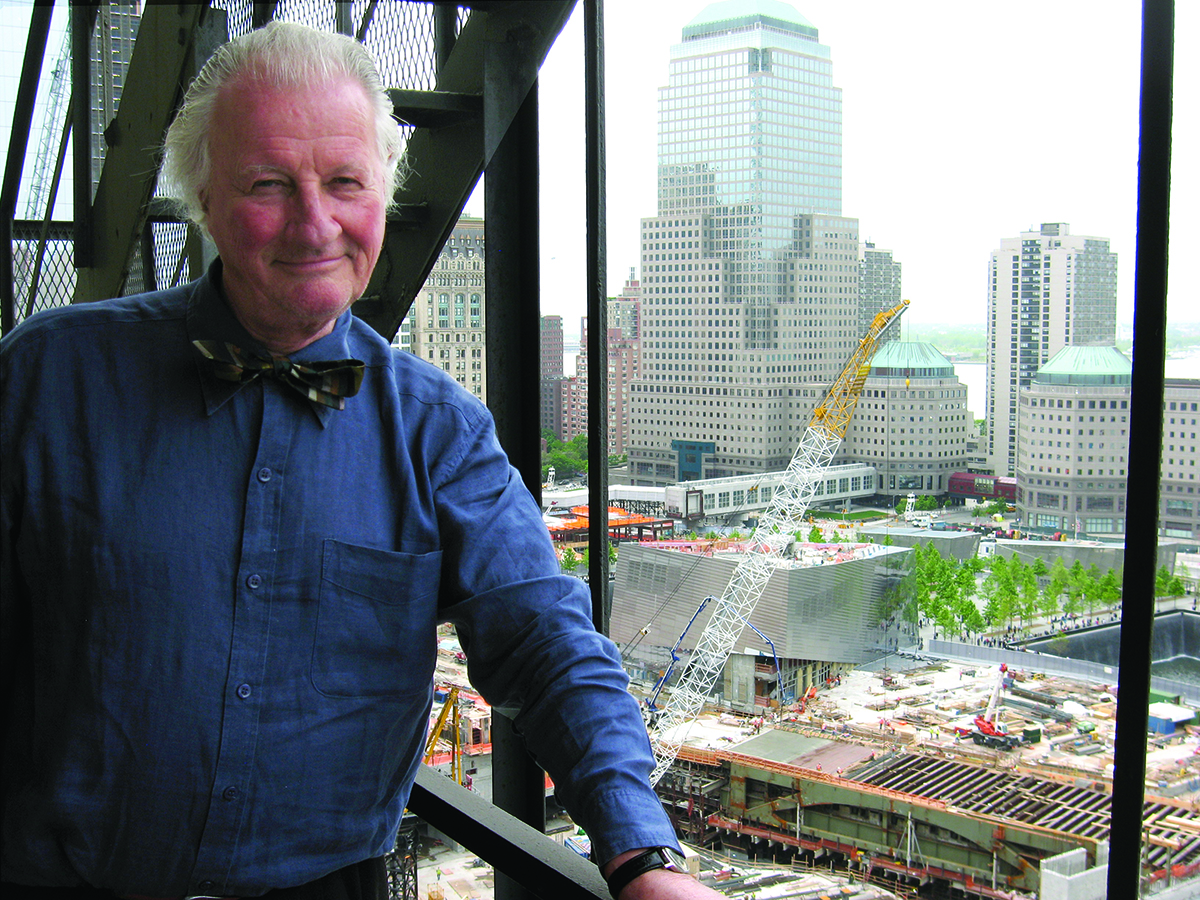MFAD Faculty Member, Keith Godard Dies
It is with sadness we report the passing on Monday, May 4, 2020, of our MFAD graphic design history lecturer, Keith Godard at 77 . He was a stalwart and welcome presence as a member of the first semester Paul Rand Lecture faculty. A pioneer of graphic design history pedagogy, he also broke ground as both a practitioner and design entrepreneur, self-publishing various books for children. As a memorial, below is an adaptation of 2013 interview with Godard about his firm, STUDIOWORKS, conducted by Steven Heller and Lita Talarico for the book “Design Firms Open For Business” (Allworth Press/SVA). We will miss his good cheer, sly dry wit and love for teaching.
STUDIOWORKS, Founded 1988
Keith Godard
What prompted you to start a studio?
I could not stand being employed and having a boss
How did you determine where your studio would be located?
After starting in this country in New Haven and then getting my first job at Fortune magazine (which I stayed for only 3 months), my girl friend found an apartment in the Chelsea Hotel in 1967. Two architect partners I met at Yale had inherited James Stirling’s small office in Union Square and asked me to join them. Little did I know when they asked me that Andy Warhol had his Factory two floors below and Saul Steinberg rented a studio on the top floor.
Describe your aesthetic, stylistic (even philosophic) approach to design?
That might need a whole chapter in itself, but in a nut shell being British somehow set the childhood tone. I was brought up in the literal comfortable way of drawing visual things and later discovering surrealism when I went to college. I never became interested in following any style after the British approach as it seemed rather archaic to me. I suppose eventually I believed in modernism but I never searched for an idea that would be of a decorated essence or a way of doing things at the moment like ‘being in’. Somehow I developed intuitive solutions emerging out of some spirit engagement within the struggle to arrive at an appropriate solution. And if it has the spicing of poetry and an ingredient of humor it makes me smile and I hope does so for others.
What is the reason for the name of your studio?
Originally I was one of many partners working under the name of WORKS. When my partners left, some to California, one moved out of New York, the name WORKS, which was a corporation, disbanded. I continued working, changing the name to STUDIOWORKS and becoming the sole proprietor in 1988.
Describe your clientele?
Mostly museums, universities, civic government organizations, United Nations organizations.
Are you attempting to broaden your client base?
No. Well I have some electronic publishing proposals that are a bit of a secret.
Do you specialize? Or generalize?
I try to be a renaissance person of the moment, I suppose that means generalize.
Are you primarily print or virtual? Or both?
I come out of print but in recent years I’ve adopted print ideas to exhibitions, environmental design and public art.
How much freedom to you allow individual designers who work for you?
My budgets often allow no time for hours of free experiment. Mostly my designers have been students of mine so they come with a fascination of how I go about things. I let them in on all my solutions to problems some which are ridiculous, some corny, some of the mark of occasional brilliance. If the designer is in agreement of compatible directions, then I let them make variations on a theme or concept within guidelines and parameters.
Could your studio get along without you for any period of time?
That is a real problem as I have a small studio and projects in France and I am away generally six weeks in the year, but I have found being up to electronic communication snuff I can keep up with supply and demands in New York. I guess eventually one will not need a studio in a big metropolis and be able to work anywhere.
Do you have a long-term plan for sustainability or growth?
At my age and time of working and the general feeling I am part of the 99% just to get enough commissions is greatly appreciated.
What is the most challenging part of having a studio?
Dealing not so much with the creative output but the daily nitty gritty of cash flow, putting out fires with clients and helpers and deciding what to do next year when the lease is up.
Describe the most satisfying project(s) of the past year?
A commission for another mural after a client seeing 23rd street station on the R/N train. Reprinting of our Empire State Building ‘guide to the views’ in seven foreign languages. And being invited to submit a proposal for the ‘Tubman-Grarrett’ Riverfront Park sculpture in Wilmington, Del., on the subject of the underground liberation of slavery.

